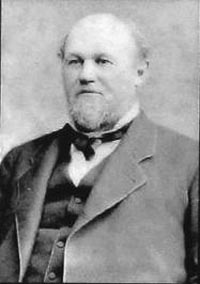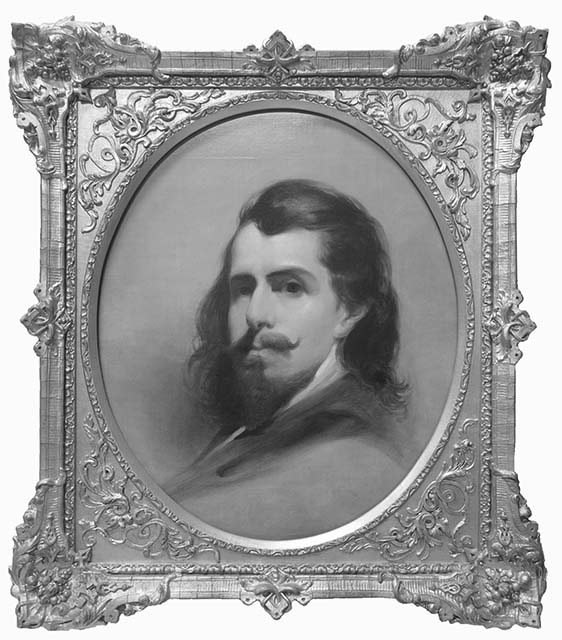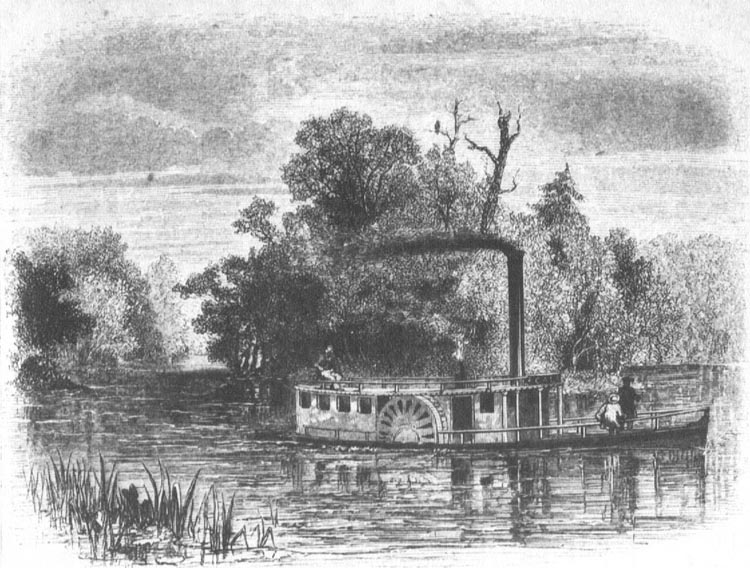Historical
Reminiscing with Robert B. Hitchings
Copyright.
All rights reserved.
A Man Called Marshall Parks, Jr, 1820-1900
How many times do we motorists cross the Albemarle and Chesapeake Canal on Battlefield Boulevard here in Chesapeake, Virginia? How many times do we hear the sound of horns when the bridge is opening and all traffic comes to a complete stop? The bridge is lifting skyward to let the barges and pleasure boats come through as many of us sit and wait until the bridge comes down to proceed to our destinations. And many times I find myself in traffic counting the pleasure crafts and barges as they go by. Welcome to Great Bridge!
There is a marker on the side of the Boulevard about the history of this Albemarle and Chesapeake canal, but do people really stop and read the true history of this fantastic canal systems? Why was this canal built and who built it?
The man was no other than Marshall Parks, Jr., a native of Old Point Comfort, Virginia, born on November 8, 1820. However, Parks spent nearly all his life in Norfolk.
Like his father before him young Parks was largely interested in steam navigation and in canal buildings. As a boy he remembered the building of the Erie Canal in New York which linked old trading posts with supplies and goods to the North West.
Marshall Parks (Sr) realized how important the resources of the Dismal Swamp was, especially logging and getting the logs to a saw mill. To ratify the situation he would later build a saw mill called South Mills at the southern end of the canal. This is how South Mill community got started.
Young Marshall inherited his father’s vision of a canal system that would link Norfolk County to North Carolina and other ports of call.
By 1850 the Great Bridge Lumber and Canal Company was formed with Marshall Parks as president. His father had been manager of the Dismal Swamp Canal and young Parks knew of the problems, for he too had been employed on the canal construction. Marshall Parks was president of this corporation for over 30 years.
During the spring 1855, Parks hired the New York engineering firm of Courtright, Barton & company to dig the canal. The civil engineer was John Lathrop and the chief engineer was Milton Courtright. The work would take two years and a cost of $400,000. They needed seven dredges (steam shovels) to dig the canal. Unlike the Dismal Swamp which had been dug by hand, these dredges operated by a steam engine. The six mile long cut through the flat countryside to connect the South Branch of the Elizabeth River at Great Bridge with the North Landing River which empites into the Currituck Sound was a great accompliment for the area. The completion of the canal system was opened for business on January 6, 1859. He and Milton Courtwright, the engineer, built the Albemarle and Chesapeake Canal.
As Parks was designing his sea-level canal, news spread to world-renownd Ferdinand de Lesseps, who in 1859-1869 designed the Suez Canal in Egypt. De Lesseps sent one of his special engineers to see & visit Marshall Park’s canal.
According to the local newspaper Southern Argus, April 20, 1857, many Norfolk residents journeyed to Great Bridge to "sidewalk superintend " the operations of the "Iron Titans" (steam engines) pulling stumps and digging up peat and mud with loud, "coughing and grunting." It was quite an undertaking to see and watch.
When the Civil War broke out, Marshall Parks volunteered for the North Carolina Navy. Whether he saw fighting or not, we do not know, but he was given the name Commodore and he was known as Commodore Parks till he passed away in June 1900.
When Norfolk fell to the Union forces on May 15, 1862, the canal came under the Union control. Confederate guerrillas were constantly interrupting the canal service. Union issued strick orders operating the canal during war time.
However, in the 20th century the General Assembly took over the operation of the Dismal Swamp Canal, and the Albemarle Canal (extensively rebuilt) for today’s water traffic are part of our heavely Traveled U.S. Intercostal Waterway. Today the Army corps of engineers maintains this well-traveled Atlantic intercostal waterway.
Marshall Parks had many interests, including the railroads of our country. He was the projector of the Virginia Beach Railway system which led to the development of a railroad to his grand resort hotel in Princess Anne County, Virginia called, "The Hollies" which is today Virginia Beach. Marshall Parks is the founder of Virginia Beach.
When he passed away in June 12, 1900, Norfolk and surrounding areas went into mourning. Marshall Parks served in the State Legislature of Virginia and Norfolk’s City Council. He was a capitalist, an entrepreneur when it came to business. His name is most prominent in connection with public work improvements, especially the father of the canal system of Norfolk County, now the city of Chesapeake.
As James Barron Hope, editor of Norfolk Landmark newspaper in 1900 said at his passing, "Commodore Parks was a man as widely known perhaps as any man in Virginia. He is the father of internal waterways. The careers of the two Parks, father and son, take us back more than 150 years to the building of Fort Monroe. They are part of our history that Tidewater has forgotten."
The Calypso of the Albemarle & Chesapeake Canal
On the morning of May 8, 1858, Edward Caledon Bruce (1825-1901) a young deaf Virginia artist and writer for the Harper’s New Monthly Magazine, came to Norfolk and Norfolk County, Virginia. He was a native of Winchester, Virginia, and came from a wealthy Southern family. His plans was to do a large feature story of the Canal systems at Norfolk County, Great Bridge, for the magazine. On hand to meet this young editor was Marshall Parks, Jr., and his party. His excursion down the river had just begun.
Bruce traveled down the James River on a steamer from Richmond, Virginia, to Norfolk in May 8, 1858. Once in Norfolk he and his party engaged a wagon and driver and a team of bay horses for the 17 mile drive to the bridge of North landing. The party arrived and boarded the new newly acquired dispatch steamer called the Calypso. Bruce called the Calypso "a pony steamboat."
However, this little steamboat had the principal honor of making the first initial trip through the canals. The date of building of the Calypso is unknown but in Marshall's Records, expenses in the company’s third Annual Report in 1858 list the price as $1,199.84.
While on this small boat Bruce sketched many pictures later made into wood cuts of the long journey through the canal systems. He captured everything with his quick pen and paper.
In his journal, Bruce on board the Calypso states. "We continued down the twisting, amber colored water, no habitation." They only saw two people, but he recorded seeing many muskrats. "They dived under our bows with calmness and savored more of the philosophy than fright and perhaps more contempt than either."
The Calypso’s rendezvous with destiny occurred early on a cold day in January 9, 1859, when she had the distinction of making history as the first canal passage towing the large iron barge known as the, "Enterprise of Wilmington" through the channel’s first long length. On the barge she was pulling was 600 bales of cotton, 10,000 bushels of grain, being delivered to her new owners, Richard Smith and J. H. Anthony of Halifax County, North Carolina. This barge Enterprise became a frequent user of the canal.
In his Annual Report of the Albemarle & Chesapeake Canal Company, Marshall Parks makes a note that she was destroyed during the Civil War in 1862.
The Calypso had a fascinating history through the canals of Chesapeake and North Carolina delivering goods and merchandize to customers in faraway places.
As I was writing this story, I could not help but think of another ship by the name of Calypso. She was the ship of Jacques Cousteau, and John Denver became famous for his song Calypso in 1975. He was traveling on board the Calypso when he wrote this popular song so long ago.Aye Calypso the places you’ve been to
The things that you’ve shown us, the stories you tell
Aye Calypso I sing to your spirit
The men who have served you so long and so well.Our Calypso of Chesapeake, although small, had places she visited up and down the canals. I am sure our Calypso had some stories to tell. But unfortunatley, they are silent. Of the men who served on our Calypso, we sing to their spirts too. Yes, our small steamboat Calypso had adventures traveling in the swampy jungle, the twisting canals of our waterway systems here in our own backyard called Chesapeake, Virginia.
* * * * * * * * * *
Robert B. Hitchings is a seventh generation Norfolk resident, graduating with an Associate's Degree in Biology from Old Dominion University and BA in history from Virginia Wesleyan University. During his studies he was awarded a scholarship at Emmanuel College, Cambridge, England, and he was an exchange student at Brooks-Westminster College, Oxford, England. From 1999-2014 he worked as head of the Sargeant Memorial History Room at Norfolk Public Library, and since then has headed the Wallace History Room at Chesapeake Public Library. He is also the President of the Norfolk County Historical Society, and for six years was a columnist for The Virginian-Pilot. Robert may be reached at nchs.wallaceroom@gmail.com


